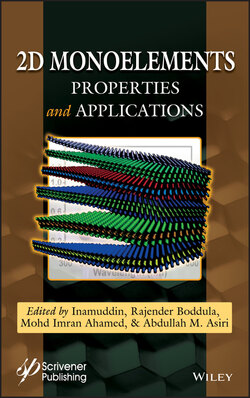Читать книгу 2D Monoelements - Группа авторов - Страница 32
1.3.2.2 Optical Response
ОглавлениеThe optical absorption spectra of half oxidized phosphorene in Figure 1.11 show maximum values for dangling structures observed at 1.46, 1.71, and 2.62 eV in , and , respectively.
This absorption behavior is required for photodetector with high efficiency. In contrast, pics of spectra describing the bridge structures coincide with the ultraviolet part and the visible light, since the they are located at 1.81, 2.03, and 3.18 eV for , and , respectively. One deduces that 50% oxidation is an effective manner to enlarge the absorption range of phosphorene along the light spectrum [20].
Figure 1.11 Absorption coefficient of dangling structures (on the left) and bridge structures (on the right) of half-oxidized phosphorene sheets obtained using the GW-BSE methods.
Half oxidation is also used to modify the reflectivity of phosphorene as illustrated in Figure 1.11. Indeed, its maximum value in the UV region is around 38%, 50%, and 34% located at 8.21, 8.04, and 7.06 eV in , , and , respectively. In the visible part, these structures show a reflectivity lower than 15% indicating their potential use for transparent electronics. The situation is different for the dangling configurations P2OU, P3OD, and P4OD structures that reflect the visible light with a maximum value of 42%, 38%, and 39% found for the energy 1.48, 2.58, and 1.68 eV, respectively [20].
In contrast to pure phosphorene, the first peak of the optical absorption in all P4O2 structures is characterized by a dark exciton with long-lifetime. This result makes these new systems promising candidates as molecular sensors or applications in on-chip communication. Studying the excitonic effects of half-oxidized phosphorene conformers reveals that the wave function in the dangling phosphorene extends along the armchair direction, which is similar to pure phosphorene (see Figure 1.12). These results indicate that six half-oxidized phosphorene conformers are potential candidates for electronic devices and photovoltaic applications [20].
